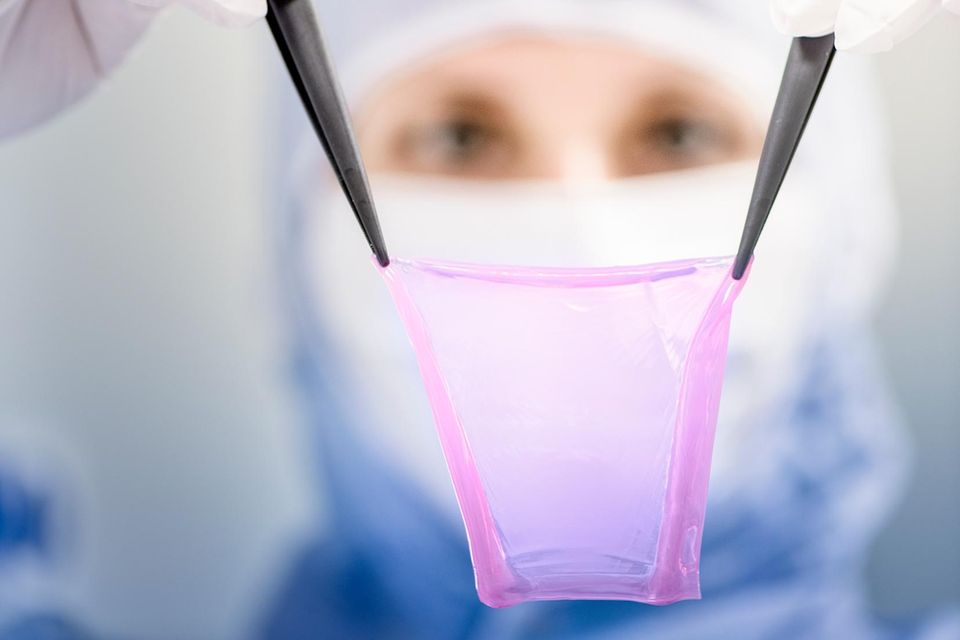"Burn Survivors": Daniela Marino gives skin and hope to children after burns

by Carolin Sage
2 minsDaniela Marino, 43, helps children with burns to live a pain-free life.
In 2009, Dr. Daniela Marino, a newly qualified biotechnologist, first came into contact with children who had suffered severe burns – many of them victims of household accidents. She conducted research into their treatment in the laboratory of the Children's Hospital Zurich. The Italian-born doctor specializes in stem cell biology and regenerative medicine, i.e., the cultivation of tissue. It quickly became clear to her that she wanted to help the children return to a normal life – without visual disfigurement, without pain. "The accident changed everything for them – their everyday lives, their opportunities," she says in a video call. "It takes a lot of strength to recover. Anyone who can do that is very strong!" That's why Daniela Marino calls the children "burn survivors." She thinks that sounds more hopeful than "burn victims." At that time, she joined the Tissue Biology Research Unit – a team that conducts research in the field of tissue biology and develops new skin in the laboratory for people with burns or extensive scars.
A quick successThe group at the children's hospital developed a treatment approach in the laboratory that no other team had ever achieved before. The first human trials began in 2014. "We saw that our skin substitute worked and was well tolerated. That's when I knew I had to try to make it possible for more people—both young and old," says Marino, who is now a mother of two herself and can personally empathize with what it means to worry about a seriously injured child.
Rescue the size of a postage stampTypically, the patient's own skin is used for larger burns. However, this method has disadvantages: a wound develops where the skin is removed. Scars also quickly form at the transplanted site, which are often stiff and less stretchable later on – a particular problem for children, who are still growing. Many "burn survivors" are therefore limited in mobility and in pain. Marino and her research team therefore developed a biotechnologically produced skin substitute that is suitable for large burns and more flexible than transplanted skin. From a skin sample – only the size of a postage stamp – important components of human skin are extracted: keratinocytes and fibroblasts. These cells make the skin firm and robust, but also elastic. They are initially multiplied separately in cell cultures and then recombined in larger quantities in a hydrogel. The final product, the artificial skin, is solid, consists of two layers, and can be transplanted like the patient's own skin.
Delicate yet very resilient: skin transplant from the laboratory
© Frank Brüderli / PR
Research at universities and clinics is important for the fundamentals, but more is needed to develop a product and bring it to market. Daniela Marino founded the startup Cutiss AG in 2017 with four colleagues. A big step. "I always wanted to be a researcher, but I had no idea about the business," she explains. At first, she googled business plans. Later, she looked into how best to ship the lab-grown skin to other parts of the world. And it worked: In recent years, Cutiss has received numerous awards (for example, as one of the leading biotech companies at the "Top 100 Swiss Startup Award"). Further long-term studies confirm that "denovoSkin," as the artificial skin is now called, remains intact even after years and grows with children. Investors have now also joined Cutiss – and Marino can make a living from her company. Her big goal: market approval. Then her artificial skin could help even more sufferers.
Brigitte
brigitte





